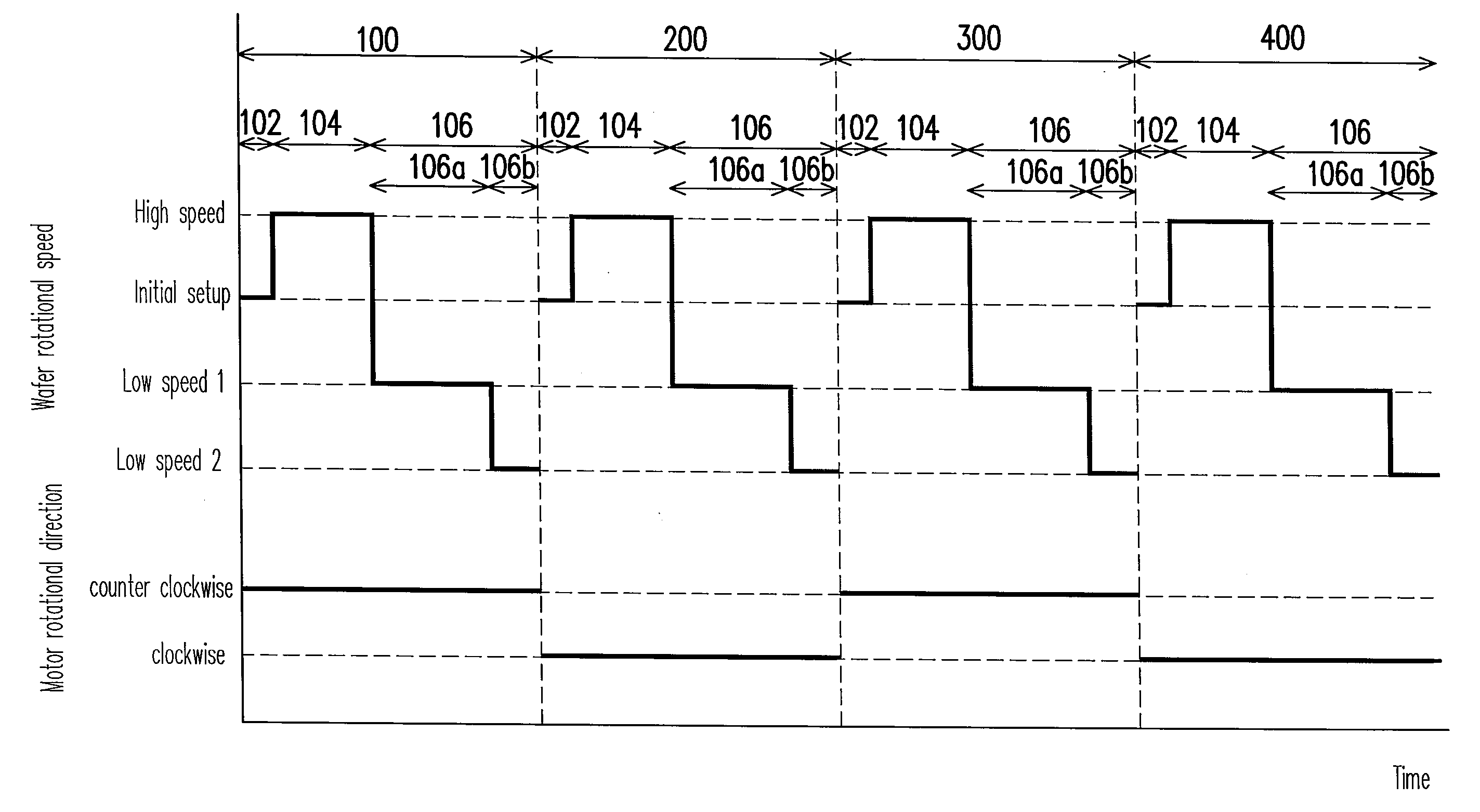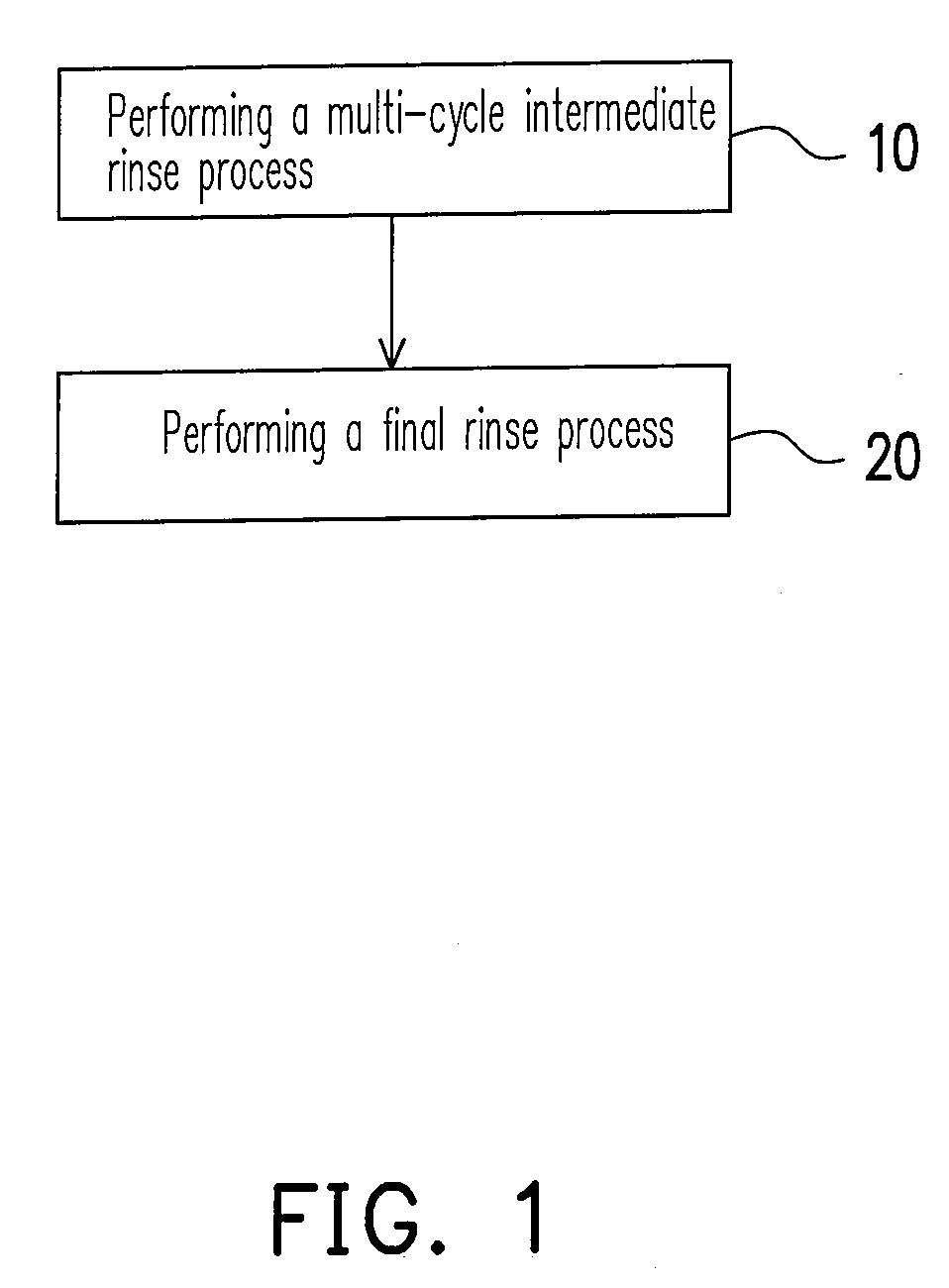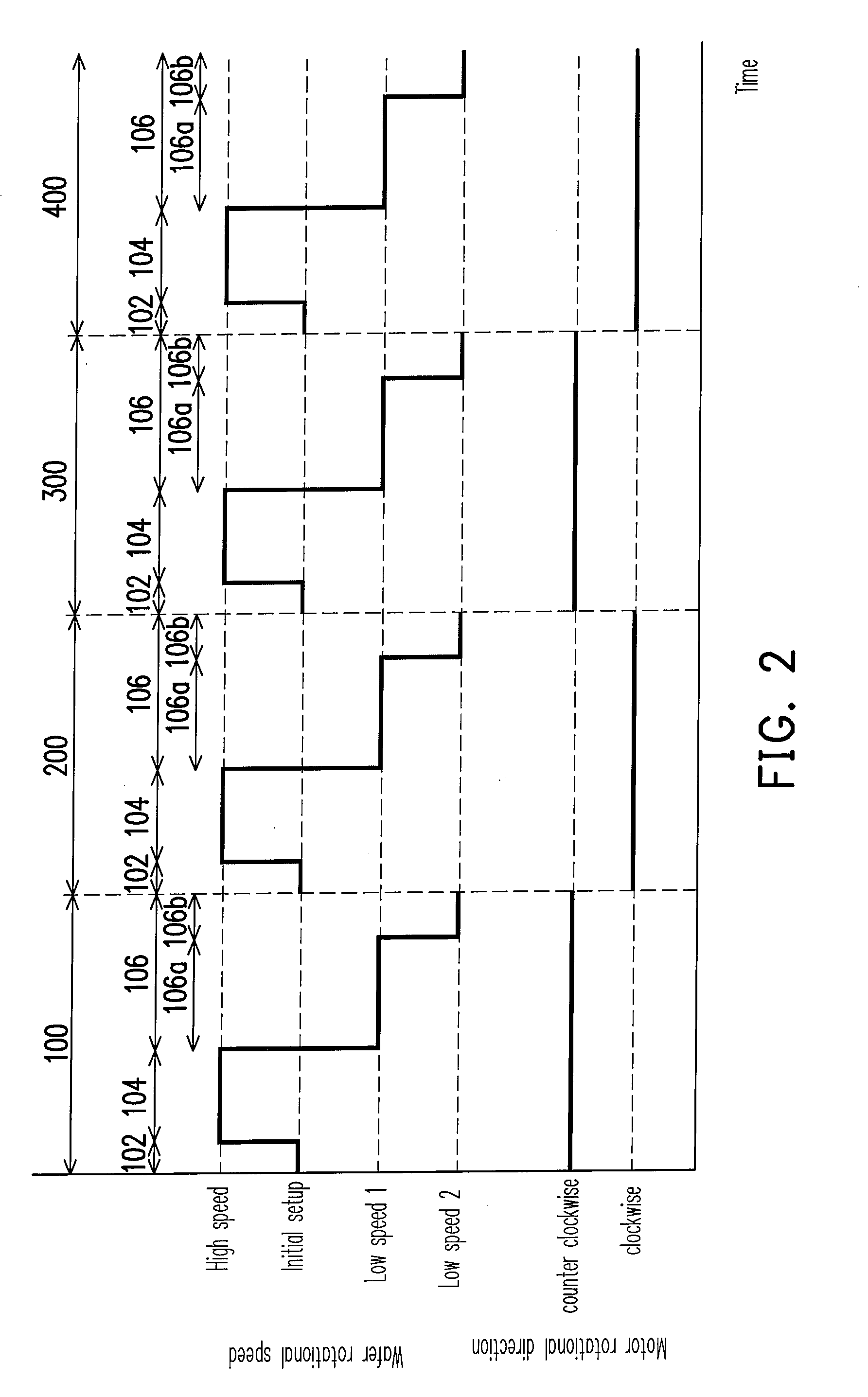Method of removing particles from wafer
a technology of removing particles and wafers, which is applied in the direction of cleaning hollow objects, detergent compositions, liquid cleaning, etc., can solve the problems of serious problems, adversely affecting the yield, and the operation of the device, so as to reduce residual particles, reduce residual particles, and effectively remove particles on the wafer surface
- Summary
- Abstract
- Description
- Claims
- Application Information
AI Technical Summary
Benefits of technology
Problems solved by technology
Method used
Image
Examples
Embodiment Construction
[0032]The particle removal method of the present invention is adopted for removing unreacted metal layer on a wafer in a salicide process or oxide residue from the previous layer subsequent to the growing of the final silicon material. For example, subsequent to forming a nickel-platinum (NiPt) alloy layer and a titanium nitride barrier layer on a wafer, a first annealing process is performed to form a NiPt salicide layer. Thereafter, the titanium nitride layer is removed, followed by removing the unreacted NiPt alloy layer. Prior to or subsequent to performing the second annealing process, a rinse process of the present invention may perform to remove particles on the wafer, for example metal particles or oxide particles, etc., to enhance the yield of the process. Further, this method of the invention in removing particles is also applicable to remove particles on a wafer after a chemical vapor deposition process.
[0033]FIG. 1 is a flow chart of steps in exemplary methods that may b...
PUM
| Property | Measurement | Unit |
|---|---|---|
| temperature | aaaaa | aaaaa |
| temperature | aaaaa | aaaaa |
| thickness | aaaaa | aaaaa |
Abstract
Description
Claims
Application Information
 Login to View More
Login to View More - R&D
- Intellectual Property
- Life Sciences
- Materials
- Tech Scout
- Unparalleled Data Quality
- Higher Quality Content
- 60% Fewer Hallucinations
Browse by: Latest US Patents, China's latest patents, Technical Efficacy Thesaurus, Application Domain, Technology Topic, Popular Technical Reports.
© 2025 PatSnap. All rights reserved.Legal|Privacy policy|Modern Slavery Act Transparency Statement|Sitemap|About US| Contact US: help@patsnap.com



